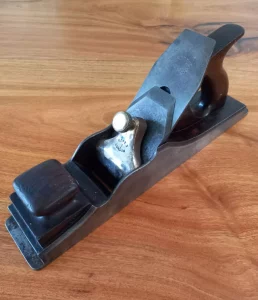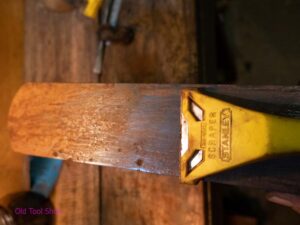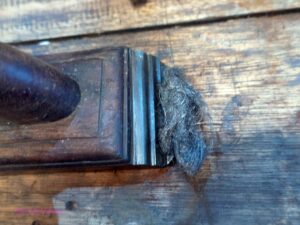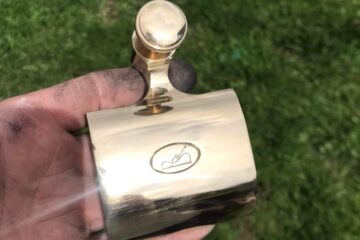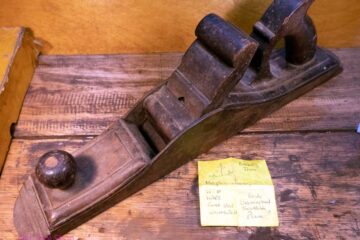Although this article is titled the best way to restore, it actually includes things you should never do if you want to restore vintage tools. The reason for this is that there are numerous ways to restore tools and they are all ok, but there are some methods which you should definitely avoid, because you can permanently impact the tools authenticity and value.
Rust removal
Never use vinegar or acids to remove rust. There are commercial-grade rust removers available if you can’t be bothered to scrape, sand or use wire wool as we do. Follow the directions carefully and the results won’t be awful. Vinegars and acids change the surface composition of the metal, increase the depth of existing pitting and micro crevices giving the metal a grey appearance. The process will have degraded the surface and will no longer be anything like it would have originally been. Commercial-grade rust removers still seem to do this, but to a lesser extent.
Scraping, sanding and the use of wire wool actually abrades and flattens the surface, so micro crevices are removed and pitting is left well alone.
Wire-brushes are a mixed bag. On rough cast iron they are great, but on high quality surfaces they are often too aggressive. Never be tempted to use a powered wire wheel unless you accept that the tool is unlikely to retain any original finish and patina.
There are some less aggressive alternatives to wire brushes that are popular such as Scotch Brite pads. These may be suitable for power rust removal, but as we have not yet tried them we can’t recommend them. In theory they should be good.
As a rule, machine finishes are too aggressive and are to be avoided unless you are a highly competent machinist and have a strong knowledge of vintage tools and their care.
Polishing
Generally, fine grade sandpaper and wire wool are great for polishing. We often move to polishing compounds and strop or metal polish and a cloth if we want to go that extra mile.
Power-polishing again is a mixed bag. Some like to restore their tools beyond clean and functional and power-polishing can help achieve this. In general, we don’t like to take tools this far so avoid power-polishing. However, for some tools a highly polished surface can provide a practical advantage (e.g. chisel backs). In the case of chisel backs a highly polished, flat surface allows for the edge to be sharper. Be aware that like grinding, power-polishing can generate significant heat. For this reason, you need to take regular breaks and keep a check the tool isn’t getting too hot.
Wood finishing removal
If finishes have to be removed, we always test with methylated spirits (denatured alcohol). Methylated spirit is great for removing dirt and shellac finishes. If we want to try removing something from a shellac finish without wrecking it, we try shellite (lighter fluid or naptha). If we believe the finish to be laquer then lacquer thinners is great to use to remove it, but methylated spirits should allow cleaning without damaging the surface. When all else fails, acetone removes almost everything. Lacquer thinners has acetone in it.
Scraping is a good method of removing a vintage finish and if you are careful and practice you can often leave the underlying wooden surface largely intact.

Wood refinishing
Vintage tools over 100 years old generally would have only had oil or shellac finishes. In the 1920s they started using lacquer commercially so tools from this period on may have lacquer finishes.
Do not use boiled linseed oil for any woodworking restoration unless you are trying to significantly darken the wood.
If you want an oil-based finish, raw linseed oil or tung oil is great. Other kitchen oils such as walnut oil can also be used. Commercially available blends containing these oils typically have additives in them, to reduce the drying time. Without these additives the drying time can be significant. We tend to dilute our oils with turpentine to speed up the drying process.
We always try to use a similar finish or easily removed finish if we are patching an existing finish. Shellac is our ‘go to’ finish. It’s easy to apply, looks great and as is easily removed if required. It just wipes off with methylated spirits (denatured alcohol). It also will go over the top of almost anything.
Try to avoid new finishes like polyurethane, unless you have a particular need for it. Although the finish is tough, it rarely looks good, it definitely is not authentic, and it is a nightmare for the next owner to remove or repair.
Remember, we are just custodians of these tools. If we sympathetically look after them now, the next generation will be able to maintain and enjoy them long after we are gone.
